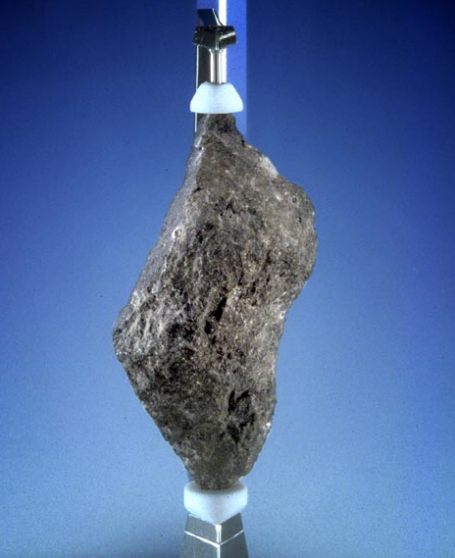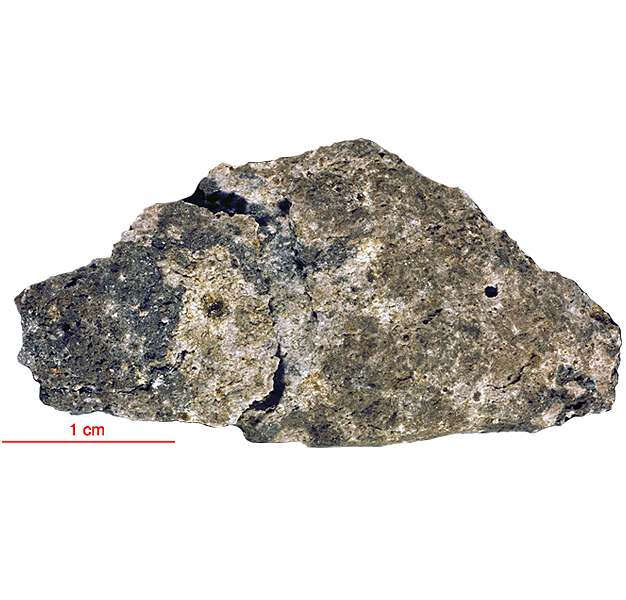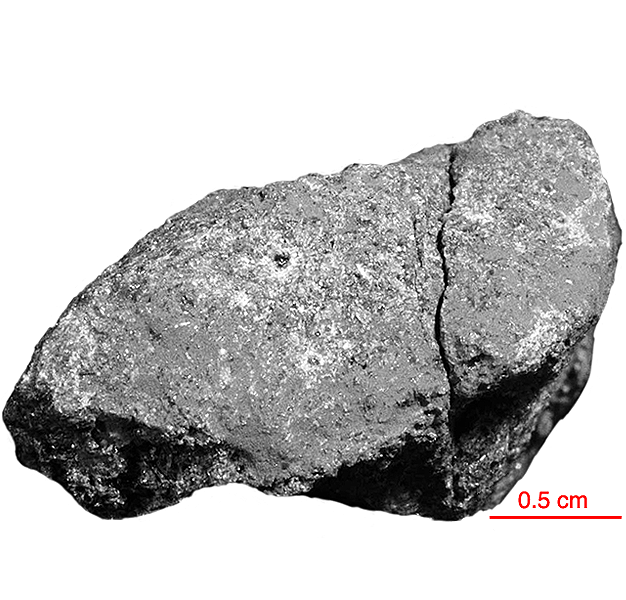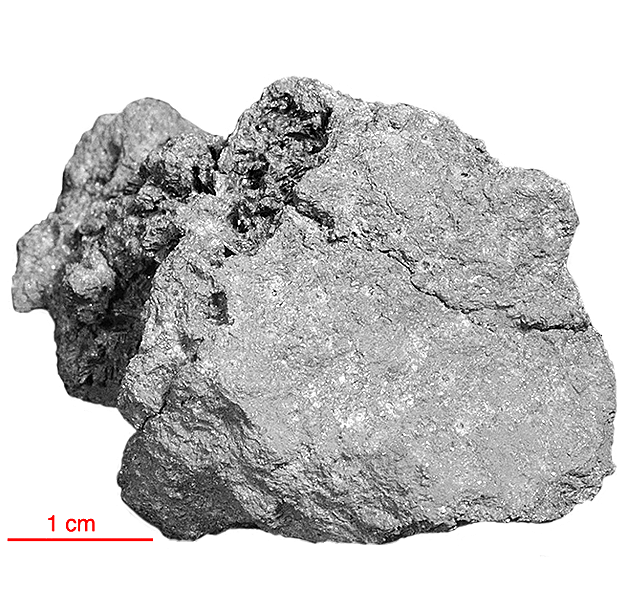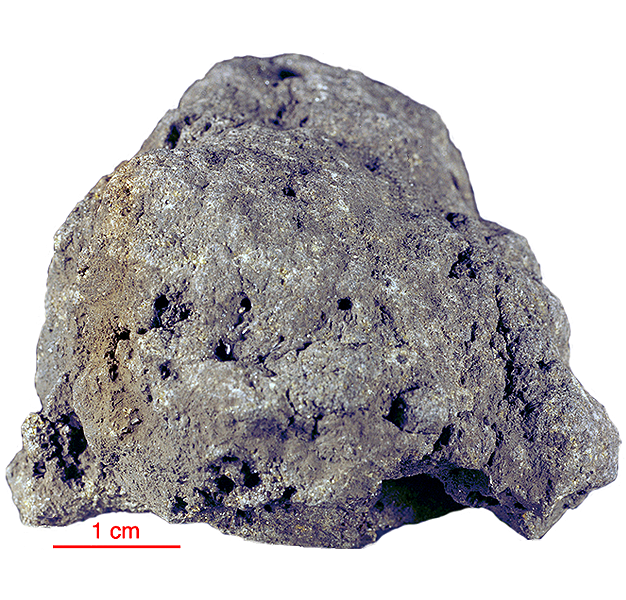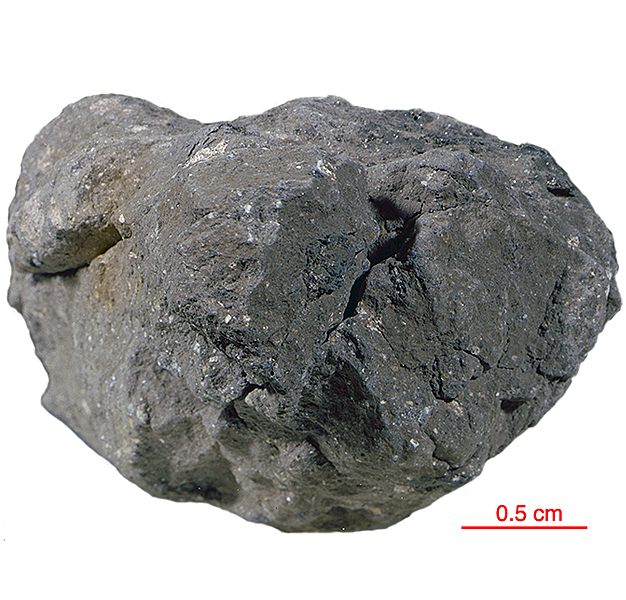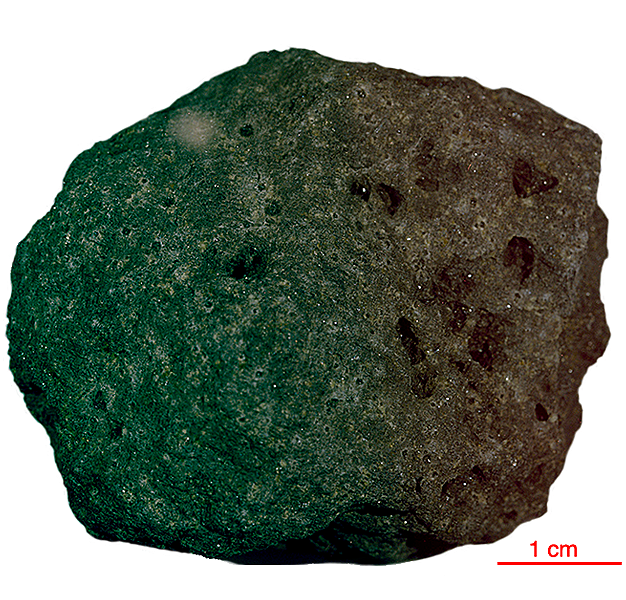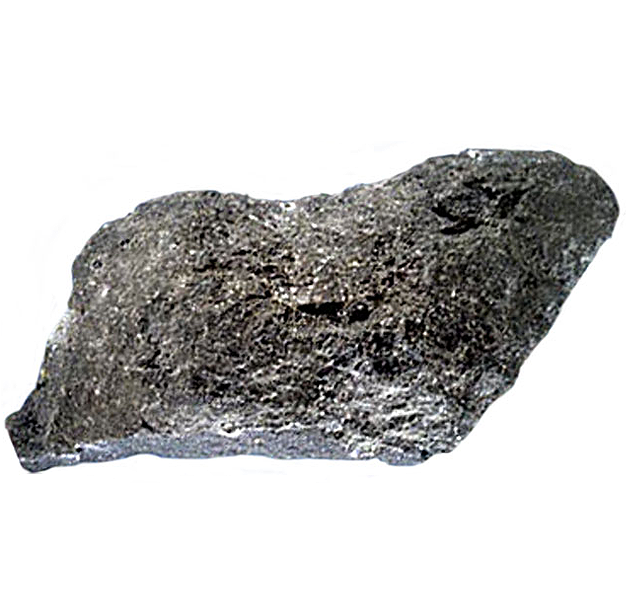
Fact sheet
Sample 12022 is medium-grained porphyritic Mare basalt collected during the Apollo 12 mission. The sample has been dated at 3.2 billion years and was probably brought to the surface of the Moon by a meteorite impact 200 million years ago.
The thin section contains phenocrysts of olivine and pyroxene (augite and pigeonite). The groundmass consists of feathery intergrowths of plagioclase feldspar, ilmenite, pyroxene and a small amount of glass. Ilmenite has an interesting cross-cutting, parallel, skeletal habit. Accessory minerals include chromite, ulvospinel and metallic iron.
A large piece of 12022 is on public display in the National Museum of Wales, Cardiff.
Further details of this and other Apollo samples are here: http://curator.jsc.nasa.gov/lunar/
Apollo 12 returned 34 kilograms of samples, including 45 rocks, samples of lunar 'soil', and several core tubes that included material from as much as 40 centimetres below the lunar surface.
Apollo 12 rocks were almost all basalts, with only two breccias in the returned samples. The basalts at the Apollo 12 site formed 3.1 to 3.3 billion years ago, roughly 500 million years later than the Apollo 11 basalts. Overall, there is much less of the element titanium in the Apollo 12 samples than in the Apollo 11 samples, which explains the more reddish colour of this region. The differences in age and chemical composition between the Apollo 11 and Apollo 12 samples demonstrate that mare volcanism did not occur as a single, Moon-wide melting event.
Apollo 12 was launched on 14 November 1969.
